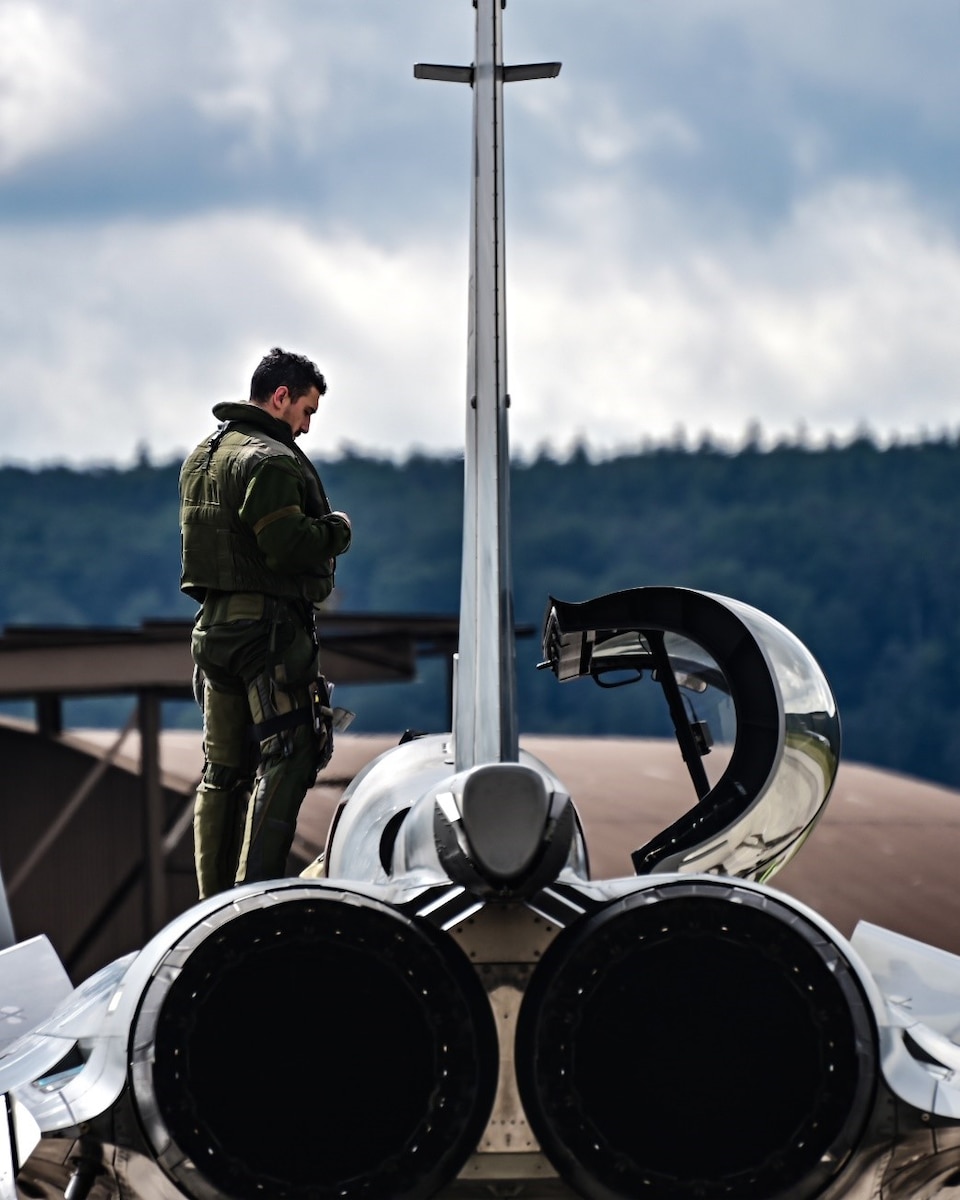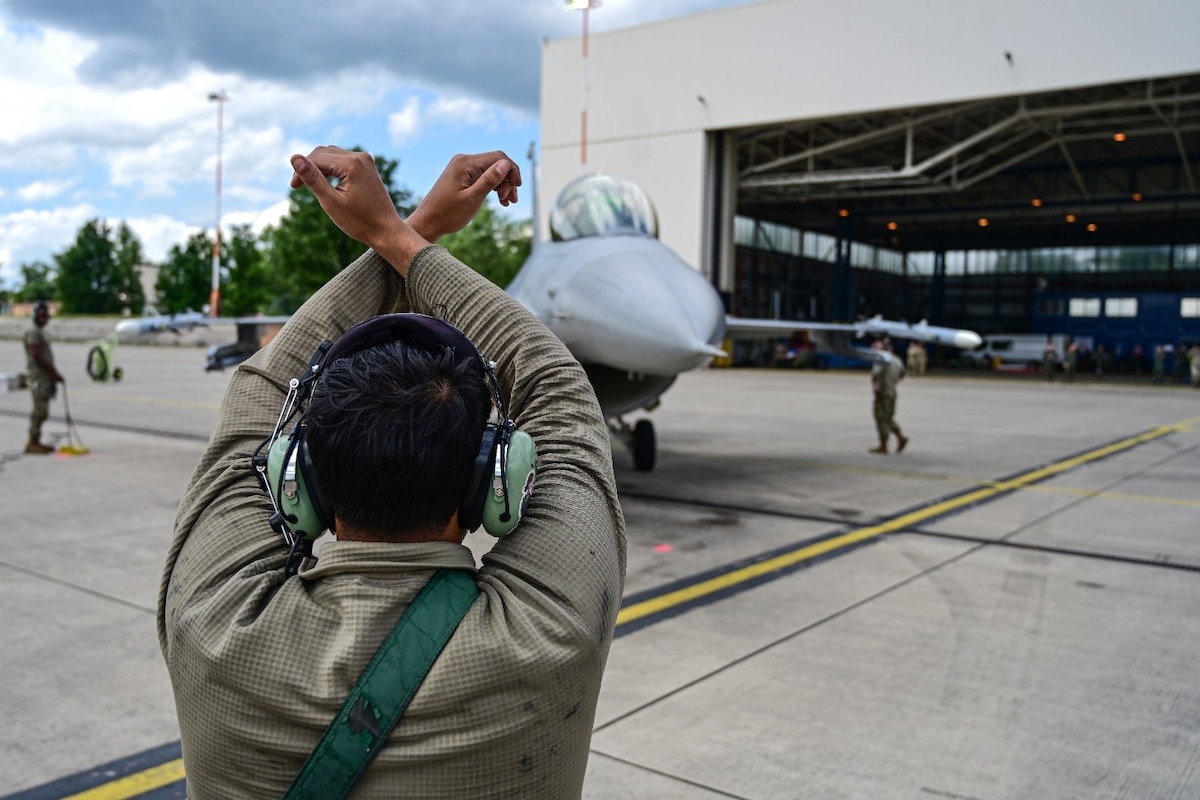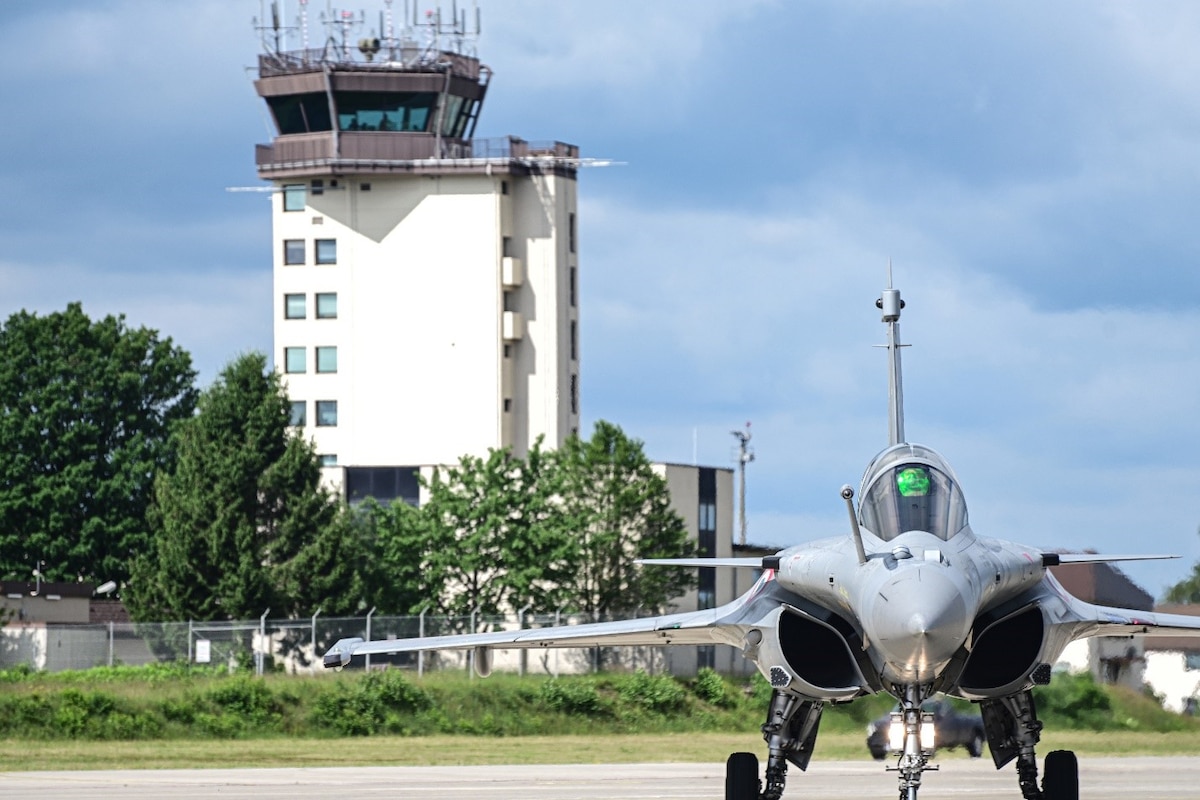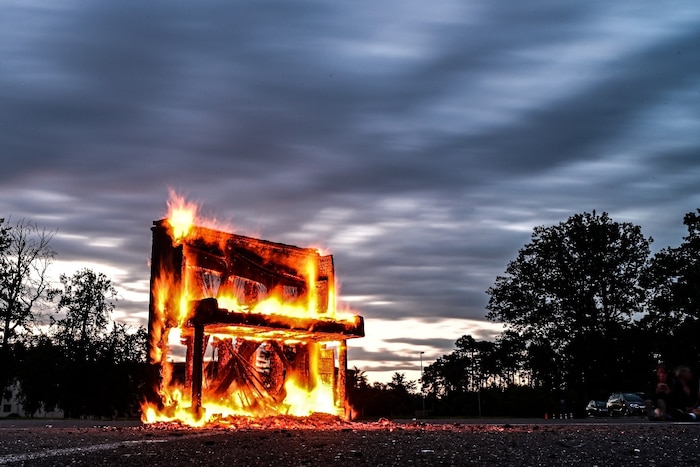At five times the force of gravity, the force of acceleration is enough to overwhelm a heart's ability to pump blood to the brain. If the effects aren't mitigated, a typical human can expect to black out within a few seconds from oxygen starvation.
With top speeds of over 1,500 mph, modern fighter jets routinely pull up to 9 Gs.
"In a fighter jet, you're sweating, you're breathing through an inch-wide oxygen tube, balancing a gamut of controls and devices, all while pushing your body to its absolute limits," explained retired Col. Cesar Rodriguez, a former U.S. Air Force A-10 Thunderbolt II and F-15 Eagle pilot. "The threat of passing out at the controls is incredibly real."
Rodriguez knows as much as anyone the dangers posed by being in a cockpit, making his attendance during a recent simulated basic fighting maneuvers exercise at Ramstein Air Base the through line between one of aerial combat's most storied eras and the future of the aerial combat enterprise.
The exercise, held June 6, comprised 37 aircraft from nine NATO countries, including both pilots and maintainers. According to Lt. Col. Michael Loringer, chief of weapons and tactics for U.S. Air Forces in Europe - Air Forces Africa and mission planner for the exercise, working with peer nations not only sharpens shared tactics but ensures any deficiencies in each nation's pilot training curricula can be identified and corrected.
"Most of us out here know each other - the global fighter community is pretty tight-knit," Loringer said. "What we've done with this exercise is we've pitted the best of Germany, Norway, France, the U.S., all these countries against one another in simulated dogfights - air-to-air engagements. Iron sharpens iron, so when these pilots finish the exercise, they'll meet on the ground and discuss their fight."
"It's not about winning. It's about learning," he said.
Rodriguez, likewise, emphasized a quality he feels transcends the decades and makes a fighter pilot truly great: Humility.
"The best pilots I've known are the ones who, no matter how good they were or how much knowledge they had, were still looking for ways to improve," he said.
Rodriguez made a continuous loop motion with his hands.
"Once you feel you've mastered your airframe, the technology is upgraded," he continued. "Once you feel you've nailed a certain maneuver, it then becomes about perfecting that maneuver in coordination with other aircraft. There's a continuum of readiness on display during this exercise that speaks to the broader NATO philosophy of not only keeping your own nation ready but also keeping ready as a joint-nation alliance."
While readiness was the main goal of the exercise, the skies weren't free from the occasional friendly rivalry.
French Air Force Lt. Col. Guillaume Veuille, commander of the 3/30th Fighter Squadron, has grown a friendship with Loringer throughout his career, participating in various exercises together.
"He (Loringer) is a great guy," said Veuille, smiling. "Friendships like ours are common among our ranks and make it both a pleasure to work together and a reason to bring your best efforts to these types of engagements."
When asked how he thought he'd fare in a fight with Loringer, Veuille gave a coy smile.
"Let's just say it'd be a tough fight," he said.
Loringer, who introduced the idea for the exercise, admitted he had some inspiration for his initial pitch.
"Not sure how familiar everyone is with the documentary, 'Top Gun,' but it's founded on some solid logic," Loringer laughed, addressing a cadre of pilots during a pre-mission brief. "And trust me, this exercise will have some Kenny Loggins."
Indeed, the exercise leaned into the fun as well, including a burger burn and a live band, creating an effective backdrop against which many friendships were made during the day's events.
As the thunder above the German landscape dissipated and the sun began to set, the pilots and maintainers gathered for one last event before parting ways.
Huddled around an acoustic piano, the tone grew somber as the group prepared to set the piano alight - a tradition from World War II in which a piano was burnt in memory of fighter pilots killed in action.
One by one, each pilot said aloud a name, each a fallen comrade, each with their own story, their own legend.
"Hap Arnold."
"Michael Scott Speicher."
"John Bates."
"Graham Higgins."
Rodriguez, too, reflected on the allegory of the piano.
"I've always compared flying to playing a piano symphony in the sky," he explained. "There's a lot to keep in mind, but there's also an art to it - a way of being - and that doesn't go away simply because you're back on the ground."
The piano kept aflame for some time, surrounded by singing members of different countries, before finally collapsing, sending a mass of embers billowing into the yawning night.










